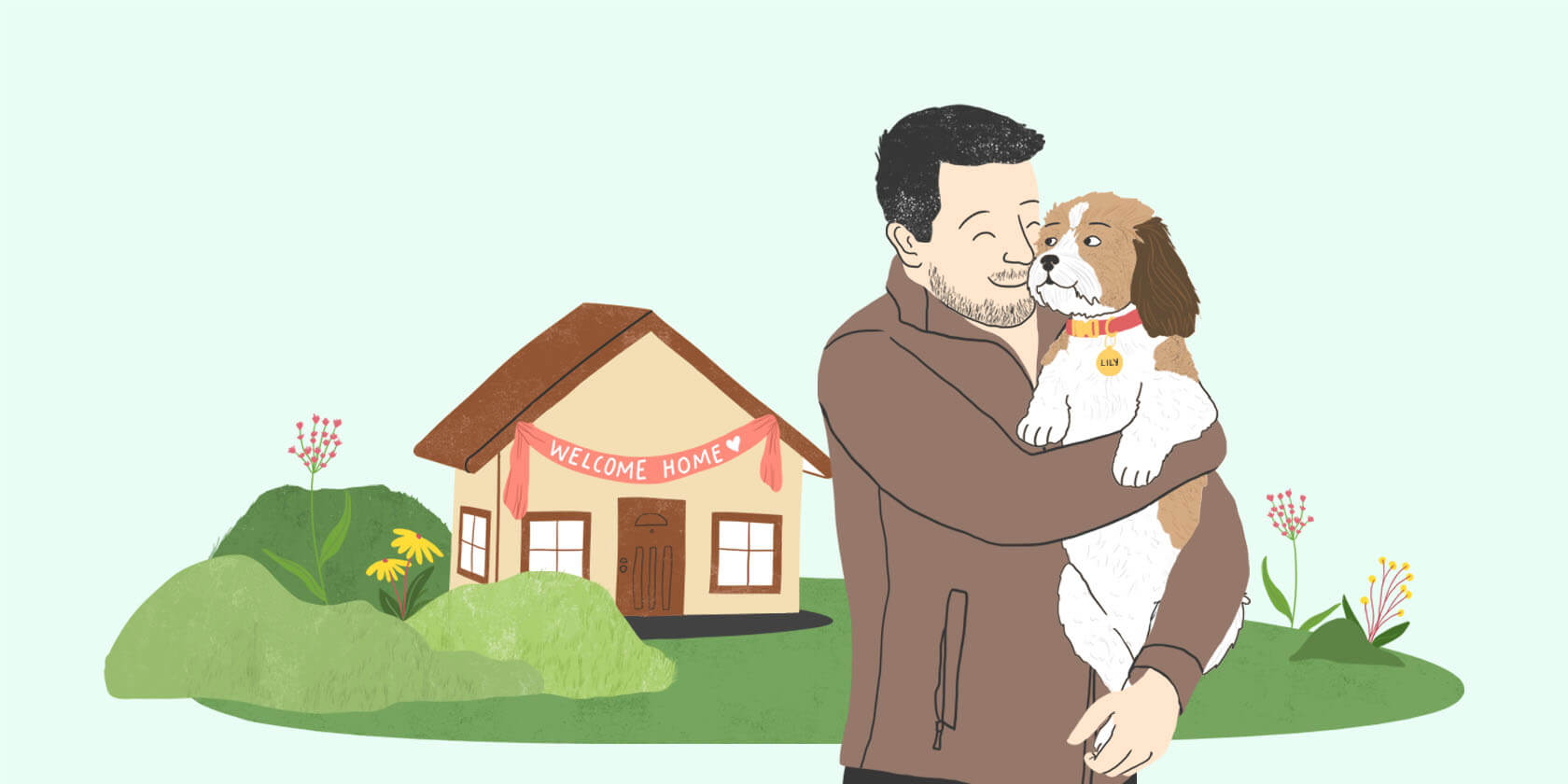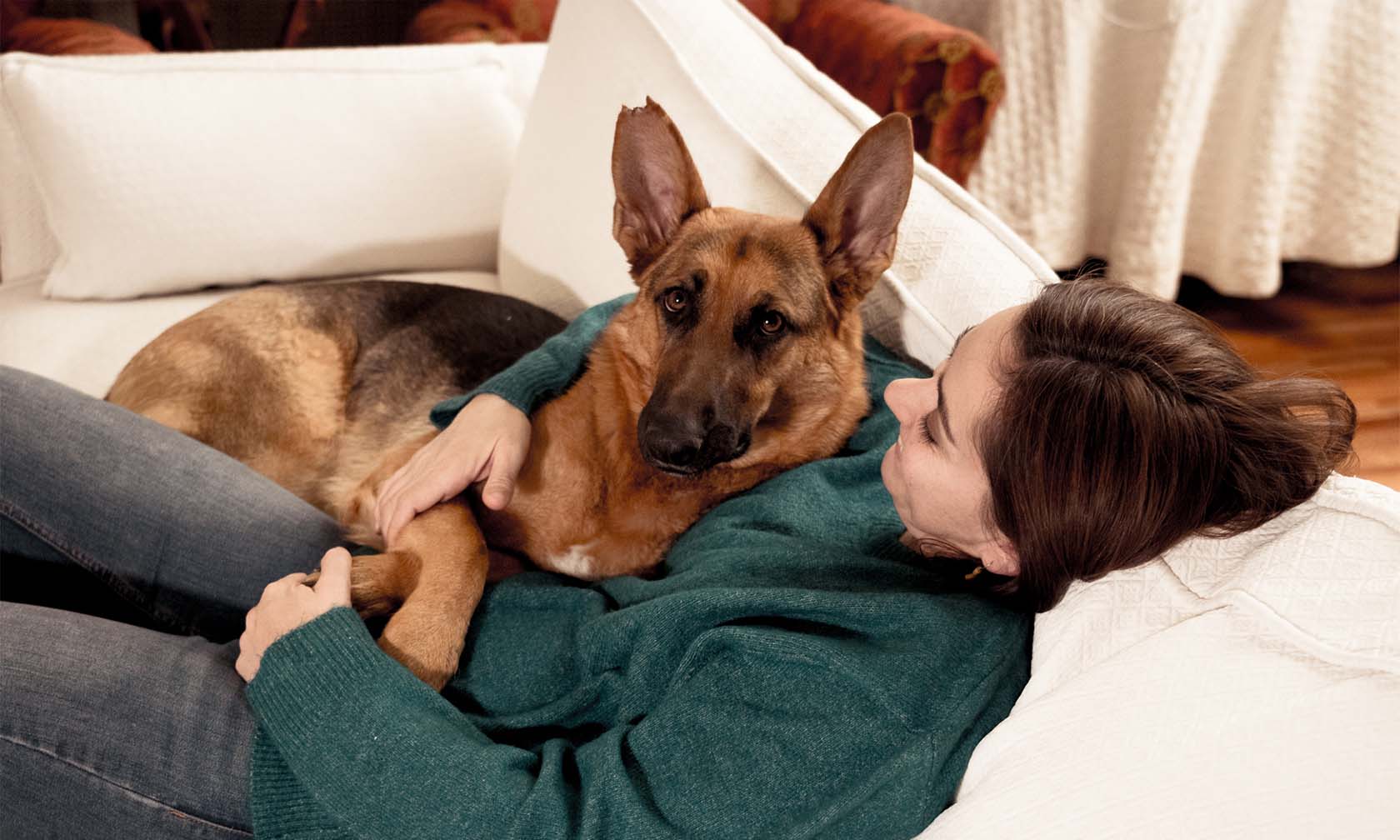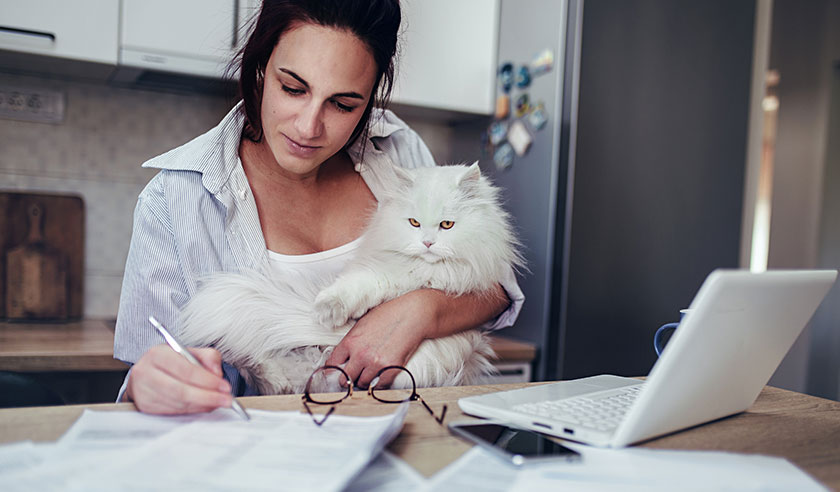Bringing your new dog home for the first time can be exciting and nerve-racking at the same time. Will they like their new home? Did you buy all the essential dog supplies you need? Will your new puppy chew up your shoes? It’s certainly an adventure, but it doesn’t need to be a stressful one!
Knowing what to expect when bringing a new dog home will go a long way in making the process easier, and help you know when something isn’t quite right and an extra visit to your veterinarian might be in order.
What to Expect from a New Dog or Puppy
It is completely normal for your dog to go through what’s commonly referred to as the transition or adjustment period — the time needed for acclimation to a new environment, schedule, and different expectations and household rules. Time, patience, consistency, and most importantly, love, go a long way in helping a new dog feel secure in their new home.
Transition periods can last anywhere from a few days to a few months, each pet is different. Adult dogs often need more time to adjust than puppies, as often they’ve been through the rehoming process and the changes are more drastic than for the youngsters. You might notice some of these signs of stress during an adjustment period:
- Hiding
- Destructive behaviors (e.g., chewing, scratching)
- House soiling accidents
- Refusing to eat
After bringing your new dog home, there are a few things you can do to help them adjust.
Give Them Time to Acclimate
Provide a safe and comfortable area for them to hide out in when they need space. Spritzing this space with dog-calming pheromones or plugging in a pheromone diffuser nearby can encourage a sense of safety and security.
Keep Their Environment Consistent
Set up their food, water, and bedding where you plan on having it long term.
Stay on a Regular Routine
Having a consistent feeding time or regular walks for exercise and outdoor bathroom breaks helps your dog learn their new schedule.
Keep Their Environment Calm
Don’t overwhelm them with lots of visitors or activity during the first week or two after coming home.
Provide Lots of Mental Enrichment Activities
Having access to interactive toys and chew toys helps new pets release stress in a positive way (and saves your furniture!).

Bringing a New Puppy Home
Bringing a new puppy home is similar to bringing a new dog home, but because of their young age, a new puppy might need more time, attention, and training as they adjust.
Puppy-Proof Your Home
Puppies are full of energy and are in the process of learning how to live in this big human world. Hopefully, you’ve dog-proofed your home before you headed home with your new puppy, as they like to explore everything with their mouths. It’s important to block off access to possibly dangerous items, such as the trash can, computer or power cords, and toxic plants. Pet gates go a long way in helping your puppy stay safe and giving you a bit more peace of mind.
Set Up a Safe Space
If your new puppy is still working through their housetraining, setting up a puppy playpen where they can hang out when you’re unable to supervise them will help prevent accidents around your home. Crate training can be very helpful in housetraining and can provide your puppy with a safe and comforting place to sleep.
Change Diet Slowly
Changing a puppy’s food should be done slowly. If possible, start to mix in small amounts of their new food with their previous food. As their body adjusts, you can start mixing in more of the new and phasing out the old. Keep an eye out for any tummy upset from the change. Puppies need lots of calories to grow! Your veterinarian can help you determine what food and how much your puppy needs.
Watch for Possible Health Issues
Keep an eye out for any coughing, sneezing, lethargy, or stomach upset in your new puppy. Young puppies are more susceptible to getting sick since their immune system is still developing and their smaller size makes them more susceptible to low blood sugar, dehydration, and other problems with missed meals and episodes of vomiting and/or diarrhea. Make sure they are dewormed to protect them from intestinal parasites, and that they receive recommended vaccines on time. Inform your veterinarian if you notice any symptoms.
Bringing a New Dog Home
Bringing home an adult or senior dog might seem easier than a puppy because they're already trained, but don't let age fool you. New dogs still need time to adjust to their surroundings.
Establish a Routine
If you’ve adopted a new dog, you might not have to worry as much about house training as you would with a new puppy. However, adult dogs, especially senior dogs, need consistency and a few days to figure out their new house training routine. Provide them with frequent potty breaks and reward them for going where they are supposed to. Don’t punish any accidents they might have inside. They’re still figuring out their new routine, and some regression in house training is common in newly adopted dogs.
Dog-Proof Your Home
Dog-proof your home by removing toxic plants, exposed electrical cords and blocking off access to human food and trash cans. Dogs love to follow their nose and scavenge for a snack. Setting up gates to keep your new dog from finding the pantry, or storing your food in cupboards, will keep them from ingesting life-threatening foods, such as xylitol, chocolate, grapes, and more.
Make Your Home Senior-Friendly
If you’re bringing home a senior dog or a dog with osteoarthritis, make your home a bit easier to navigate by putting down rugs or mats on slippery floors to help them feel more stable. Consider adding ramps or dog stairs for access to furniture so they can easily relax close to you. Orthopedic dog beds placed throughout the home will provide comfortable rest areas for them to hang out and still keep an eye on you.
Watch for Changes in Their Health
Speak with your veterinarian to find out when any booster vaccines are needed for your newly adopted dog. If you notice any symptoms of kennel cough, such as a deep cough or lethargy, seek out treatment and keep your dog away from other dogs to prevent the spread of this common illness. Canine Influenza (“dog flu”) can also occur and can look like kennel cough, though it is often also accompanied by a decreased appetite, discharge from their eye(s) and/or nose, and a fever. Dogs with flu can also have difficulty breathing. Any persistent cough in your newly adopted dog, especially if accompanied by decreased energy and/or appetite, should be evaluated by your veterinarian.
ZPC-00590R2




